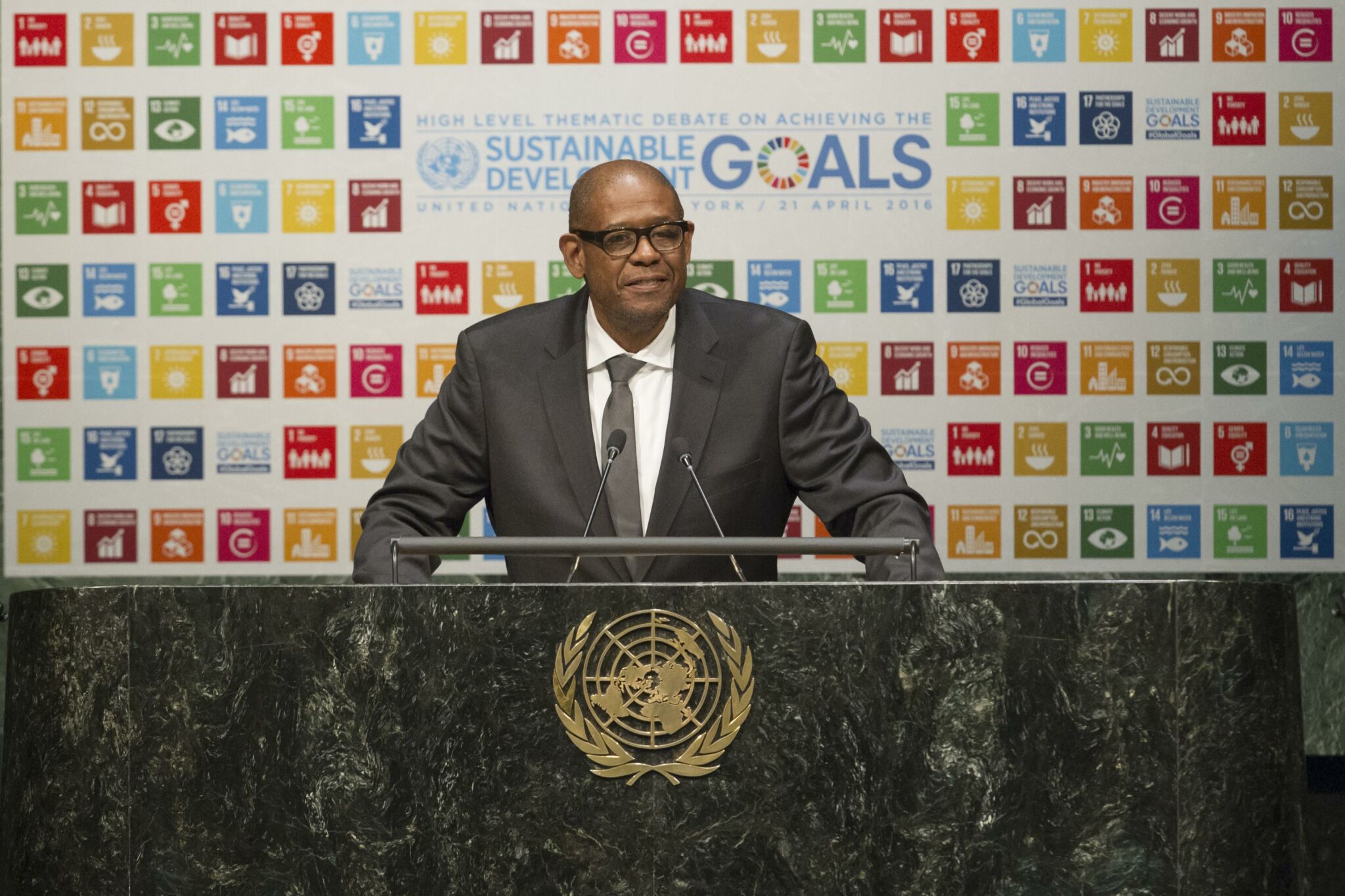A blog post by Forest Whitaker on International Day of Peace, 2023

In 2015, world leaders agreed on a series of Global Goals, which were designed to make our societies safer, more inclusive, and crafted to promote key issues like sustainable development, environmental security, education, health and well-being, energy security, and gender equality. We are now at the halfway mark. But unfortunately, the world is still suffering. Among climate change, economic crises, war, poverty and pandemics, it seems like humanity is having to face one challenge after another. And due to all these unexpected challenges, only 15% of the SDGs have been achieved so far. The proverbial light at the end of the tunnel has become a distant speck, as we hold onto a sliver of hope for the world peace which we deeply aspire.
The idea of peace and justice for all is enshrined in the United Nations Charter, yet conflict and injustice are experienced by millions of people around the world everyday. Suffering has not been defeated. Today, one-quarter of humanity lives in conflict-affected areas, and 35 million refugees are living far away from home, seeking refuge in neighboring countries — where they’re sometimes welcome, and often not. In spite of these hardships, when even all hope seems lost, our inherent humanity can help us pull through. I’ve seen this with my own eyes, at the Kiryandongo Refugee Settlement in Uganda, where South Sudanese refugees have managed to build something real, to create links with host communities. With a little help and support, they’ve realized that not all hope is lost, and that we can rebuild something true and lasting. We must not allow the effects of conflict to ravage society. We cannot accept seeing peoples’ hopes shattered, with their future taken away from them. To achieve this, cooperation is key.
At this halfway point, we need to come together to think about how we can make up for lost time. It’s not too late to regroup, restrategize, and hit our goals. When I hear about environmental catastrophes in nations like Turkey, Morocco or Libya, I can understand that feeling of desperation, of impotence in the face of powers so strong they seem insurmountable. But peace, as I’ve always said, is contagious. I’ve seen this firsthand through the Peacemakers at WPDI, who get trained in peace and then use their experience to train others, with a true ripple effect extending throughout their communities. At the halfway point for the Goals, we must support people living in conflict, prioritize those most at risk, and foster work for peace everywhere. And we need to urgently take action to restore trust and strengthen the capacity of institutions to secure justice for all and drive sustainable development.
I’ve campaigned for peace for over a decade, and advocated for the SDGs through that work. Traveling around the world, launching initiatives from California to South Africa, from South Sudan to France, has only reinforced my deep convictions that to achieve peace and justice, we need sustainable development. And to undermine root causes of conflict, we need sustainable development. The SDGs are the most effective blueprint we have to ensure universal access to the fundamental human rights that will ensure security and prosperity. But this requires total focus on our common goals, and international cooperation through global institutions.
As we come together now to commit to the acceleration of the SDGs in the second half, it’s especially important for the voices and participation of youth to be ensured. Young people are the torchbearers for change and are crucial in the protection of human rights, as demonstrated by their commitment and activism across the world. We need to invest in them now if we are to get anywhere near our targets. The next seven years are going to be crucial, and perhaps even the most important period in the history of humanity. It’s not too late. I believe we can do it.